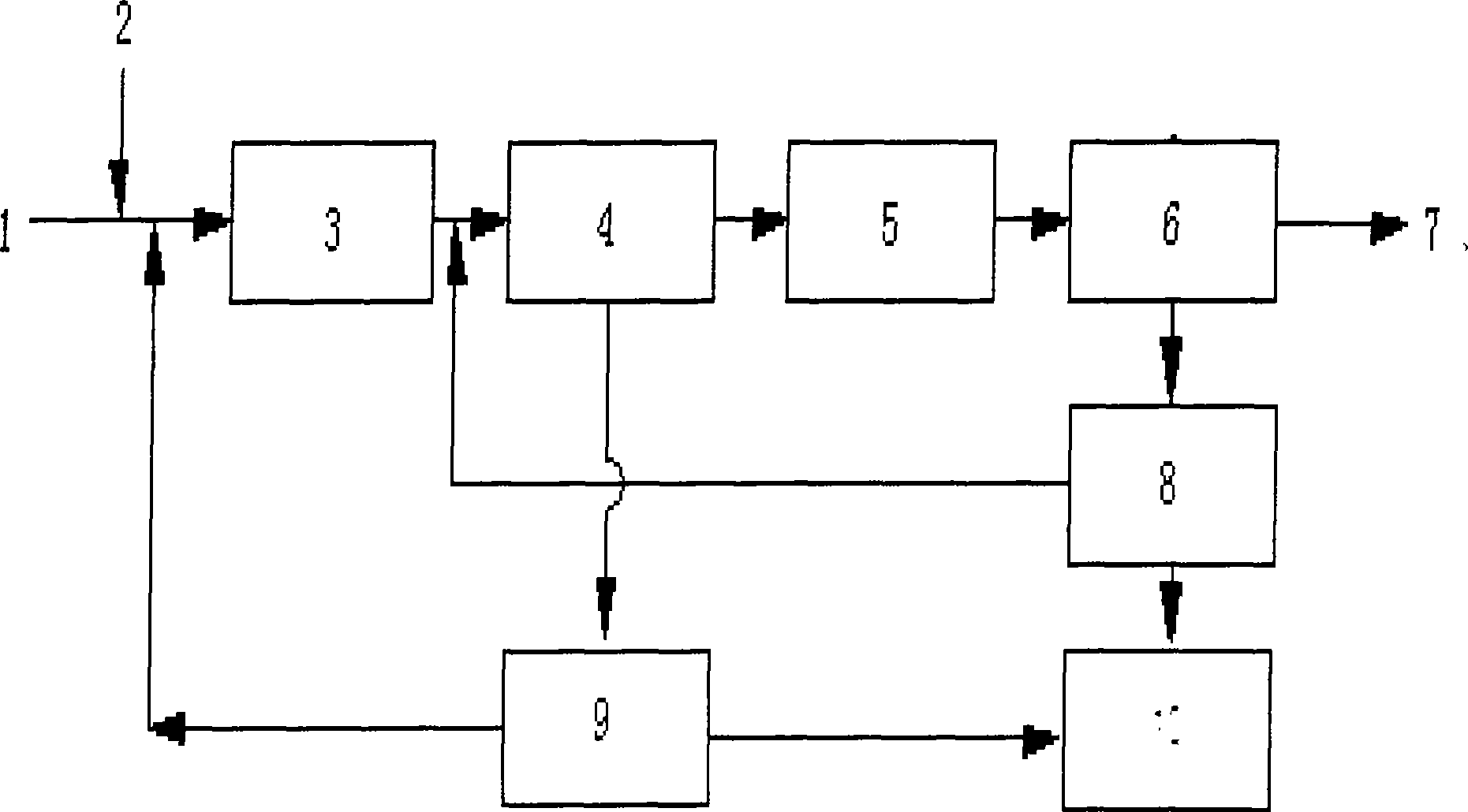Processing system and operation method for phosphor-containing organic wastewater
A technology of organic wastewater and operation method, which is applied in water/sewage treatment, biological water/sewage treatment, water/sewage multi-stage treatment, etc., can solve the problem of not being able to guarantee discharge up to the standard, and reduce operating costs and dosage. Effect
- Summary
- Abstract
- Description
- Claims
- Application Information
AI Technical Summary
Problems solved by technology
Method used
Image
Examples
Embodiment 1
[0028] The water quality of phosphorus-containing organic wastewater 1 COD≥500mg / L, BOD 5 ≥300mg / L, TP≥18mg / L, it enters the mixing reactor 3 (hydraulic retention time 20min), and the FeCl 3(dosing amount 90mg / L) iron salt 2, the mud slag that returns from sludge tank 9 fully mixes, and the phosphorus in the waste water and iron salt generation chemical reaction generates the insoluble sediment of phosphorus, and precipitation is poisonous to aerobic microorganism simultaneously sulfide. Then, the wastewater and sediment discharged from the mixing reactor 3 are mixed with the excess sludge returned from the excess sludge conditioning tank 8, and flow into the sedimentation tank 4 (hydraulic retention time 2.0h) together for sludge-water separation.
[0029] The waste water after chemical phosphorus removal from the sedimentation tank 4 enters the contact oxidation tank 5 (hydraulic retention time 4.5h), where a part of the organic matter is oxidized and degraded into carbon d...
Embodiment 2
[0033] The water quality of phosphorus-containing organic wastewater 1 COD≥2500mg / L, BOD 5 ≥1350mg / L, TP≥33mg / L, it enters the mixing reactor 3 (hydraulic retention time 30min), and the FeCl 3 (dosing amount 180mg / L) iron salt 2, the mud slag that returns from sludge tank 9 fully mixes, and the phosphorus in the waste water and iron salt generation chemical reaction generates the insoluble sediment of phosphorus, and precipitation is poisonous to aerobic microorganism at the same time sulfide. Then, the wastewater and sediment discharged from the mixing reactor 3 are mixed with the excess sludge returned from the excess sludge conditioning tank 8, and flow into the sedimentation tank 4 (hydraulic retention time 3.0h) together for sludge-water separation.
[0034] The waste water after chemical phosphorus removal from the sedimentation tank 4 enters the contact oxidation tank 5 (hydraulic retention time 6.5h), where a part of the organic matter is oxidized and degraded into ca...
Embodiment 3
[0038] The water quality of phosphorus-containing organic wastewater 1 COD≥5000mg / L, BOD 5 ≥3000mg / L, TP≥70mg / L, it enters the mixing reactor 3 (hydraulic retention time 40min), and the FeCl 3 (dosing amount 400mg / L) iron salt 2, the mud slag that returns from sludge tank 9 fully mixes, and the phosphorus in the waste water and iron salt generation chemical reaction generates the insoluble sediment of phosphorus, and precipitation is poisonous to aerobic microorganism simultaneously sulfide. Then, the wastewater and sediment discharged from the mixing reactor 3 are mixed with the excess sludge returned from the excess sludge conditioning tank 8, and flow into the sedimentation tank 4 (hydraulic retention time 4.0h) together for sludge-water separation.
[0039] The wastewater after chemical phosphorus removal from the sedimentation tank 4 enters the contact oxidation tank 5 (hydraulic retention time 9.0 h), where a part of the organic matter is oxidized and degraded into carb...
PUM
 Login to View More
Login to View More Abstract
Description
Claims
Application Information
 Login to View More
Login to View More - R&D
- Intellectual Property
- Life Sciences
- Materials
- Tech Scout
- Unparalleled Data Quality
- Higher Quality Content
- 60% Fewer Hallucinations
Browse by: Latest US Patents, China's latest patents, Technical Efficacy Thesaurus, Application Domain, Technology Topic, Popular Technical Reports.
© 2025 PatSnap. All rights reserved.Legal|Privacy policy|Modern Slavery Act Transparency Statement|Sitemap|About US| Contact US: help@patsnap.com

